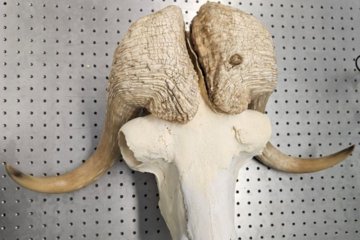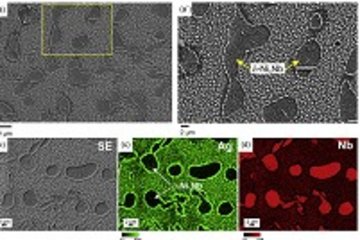All genres
1.
Journal Article
Differences in perchlorate adsorption to azobenzene monolayers on gold formed from thioacetate and thiol precursors. Zeitschrift für physikalische Chemie 236 (10) (2022)
2.
Journal Article
Superoxide intermediate in the oxygen reduction on a zinc hydroxide model corrosion product. The Journal of Chemical Physics 157, 224702 (2022)
3.
Journal Article
Water adsorbate phases on ZnO and impact of vapor pressure on the equilibrium shape of nanoparticles. The Journal of Chemical Physics 148, 054701 (2018)
4.
Journal Article
Water aggregation and dissociation on the ZnO(1010) surface. Physical Chemistry Chemical Physics 19, pp. 1466 - 1486 (2017)
5.
Journal Article
Self-Assembled Monolayers: Star-Shaped Crystallographic Cracking of Localized Nanoporous Defects (Adv. Mater. 33/2015). Advanced Materials 27 (33), p. 4947 - 4947 (2015)
6.
Journal Article
Star-Shaped Crystallographic Cracking of Localized Nanoporous Defects. Advanced Materials 27, pp. 4877 - 4882 (2015)
7.
Journal Article
Effect of hydrogen carbonate and chloride on zinc corrosion investigated by a scanning flow cell system. Electrochimica Acta 159, pp. 198 - 209 (2015)
8.
Journal Article
Stereochemistry of bistricyclic aromatic enes and related polycyclic systems. Topics in Current Chemistry 350, pp. 177 - 277 (2014)
9.
Journal Article
The effect of particle proximity on the oxygen reduction rate of size-selected platinum clusters. Nature Materials 12 (10), pp. 919 - 924 (2013)
10.
Journal Article
In situ infrared spectroscopic investigation of intermediates in the electrochemical oxygen reduction on n-Ge(100) in alkaline perchlorate and chloride electrolyte. Electrochimica Acta 106, pp. 472 - 482 (2013)
11.
Journal Article
The impact of spectator species on the interaction of H2O2 with platinum – implications for the oxygen reduction reaction pathways. Physical Chemistry Chemical Physics 15 (21), pp. 8058 - 8068 (2013)
12.
Journal Article
A mechanistic study of the electrochemical oxygen reduction on the model semiconductor n-Ge(100) by ATR-IR and DFT. Physical Chemistry Chemical Physics 15 (16), pp. 5771 - 5781 (2013)
13.
Journal Article
Formation of highly ordered and orientated gold islands: Effect of immersion time on the molecular adlayer structure of pentafluorobenzenethiols (PFBT) SAMs on Au(111). Langmuir 28 (27), pp. 10192 - 10208 (2012)
14.
Journal Article
Hydrogen peroxide electrochemistry on platinum: Towards understanding the oxygen reduction reaction mechanism. Physical Chemistry and Chemical Physics 14, pp. 7384 - 7391 (2012)
15.
Journal Article
Near-surface ion distribution and buffer effects during electrochemical reactions. Physical Chemistry Chemical Physics 13 (36), pp. 16384 - 16394 (2011)
16.
Journal Article
Steric and Chain Length Effects in the (√(3) x √(3))R30°Structures of Alkanethiol Self-Assembled Monolayers on Au(111). ChemPhysChem 12, pp. 999 - 1009 (2011)
17.
Journal Article
The effective surface pH during reactions at the solid–liquid interface. Electrochemistry Communications 13 (6), pp. 634 - 637 (2011)
18.
Journal Article
Numerical analysis of Debye screening effect in electrode surface potential mapping by scanning electrochemical potential microscopy. Electrochemistry Communucations 12 (10), pp. 1391 - 1394 (2010)
19.
Journal Article
Numerical simulation of probing the electric double layer by scanning electrochemical potential microscopy. Electrochimica Acta 55 (18), pp. 5210 - 5222 (2010)
20.
Journal Article
The Role of Gold Adatoms in Self-Assembled Monolayers of Thiol on Au(111). Sp. Iss. SI, pp. 3466 - 3472 (2009)











